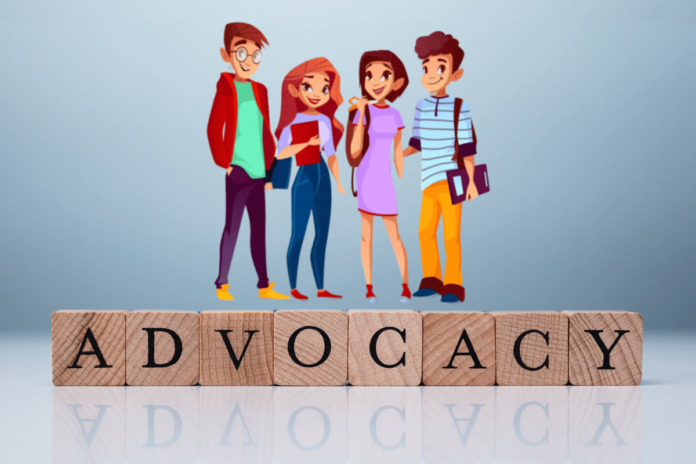A critical life skill, self-advocacy enables people to state their rights and needs, consider the advantages and disadvantages, and make wise judgements. Special education students particularly need this aptitude since they frequently require extra help to understand and express their needs and rights to teachers and other professionals. Strong self-esteem and good relationships with classmates and teachers can be developed by special education children who learn and practice self-advocacy techniques.
a) What is Self Advocacy?
Clear and concise expression of one’s needs, interests, and beliefs is known as self-advocacy. This ability is necessary for learning, comprehending, and communicating needs all of one’s life. Understanding special education legislation, expressing oneself, making educated decisions, and having right of entry to resources and services are all part of self-advocacy abilities. Individuals receiving special education also need to develop their ability to communicate clearly and effect constructive change.
b) Importance of Self Advocacy:
Ability to advocate for oneself is a prerequisite for successful communication of rights, preferences, and needs for disabled students enrolled in special education programmes. These pupils can take charge of their lives and defend their needs without depending on other people when they practise self-advocacy. Special education students can acquire vital self-advocacy skills through communication improvement, which will help them to efficiently manage their education and make sure their needs are satisfied.
c) Special Education and Self Advocacy:
Self-advocacy is a critical ability for special education pupils. It gives them the ability to manage their life and get ready for future endeavours. Through self-advocacy, special education students can shape decisions that impact their schooling. For individuals that need more help and support, this is especially crucial because without asking, they could not get it. Self-advocacy skills help these pupils feel confident and autonomous by enabling them to make sure their needs are met.
d) Self Advocacy strategies in Special Education:
Special education students can increase their ability for self-advocacy with the use of a range of techniques and tools. Part of self-advocacy education includes teaching kids how to recognise their rights and needs as well as how to communicate with others. Youngsters can also pick up effective self-advocacy skills by being exposed to a range of resources and support networks and taught problem-solving techniques. Finally, matching kids up with others who share their interests might help them grow in their confidence and sense of self-efficacy.
e) Special Education Benefits of Self-Advocacy:
Special education students who practice self-advocacy can take ownership of their education and make choices that support their academic and personal goals. Better confidence and self-esteem are also associated with it, as is greater academic achievement. Children in special education can get the following from self-advocacy:
- Enhancements of Skills in the Educational Setting
Special education students are urged to take an active part in their own education by means of self-advocacy. People that practice self-advocacy pick up skills in rule explanation, assistance seeking, and progress monitoring. It is urged of the students to engage in their education and to raise any problems that could be standing in their way by speaking up and raising questions.
- Increased Self Esteem and Self Determination
Self-advocacy helps special education students better grasp their rights in the classroom and learn about the resources that are accessible to them. It also allows children the independence to make their own decisions and assume accountability for their education without depending on other people’s approval. Students that use this kind of self-determination may become more confident and worthy of themselves.
- Better Interactions Between Teachers and Students
Participating in class and interacting with peers and professors come more naturally to self-advocating students. It also motivates educators to give their students’ needs more of their attention and to offer the right kind of support. Following that, teachers can establish a more cooperative and inclusive learning environment for the special education student.
f) Types of Self Advocacy
There are several guises that self-advocacy often takes. Children can ask enquiries, state needs, and make requests orally using voice. By use of gestures, facial expressions, and body language, students can also communicate nonverbally. To express their wishes, people can also use self-advocacy techniques such sending emails or letters, turning in reports, or making presentations. In special education, self-advocacy takes many different forms.
i) Speaking Up
Speaking up is among the most critical components of self-advocacy. A portion of this includes telling teachers and other experts about your thoughts, feelings, wants, and issues. Speaking up in front of a group, asking questions, or having one-on-one conversations with teachers or other experts are all ways special education kids could practice.
ii) Writing
Writing is another aspect of special education self-advocacy. With questions about their academic standing, needs, or requests for modifications, students can write to their teachers. To receive the necessary assistance, people can also write to other experts, such as their doctor or the special education department of the school district.
iii) Technology and Media
Special education students can practice self-advocacy by using technology and the media. This can entail making movies to clarify their rights, interacting with others who can aid on social media, or starting websites or blogs to share details about their needs and experiences.
g) Strategies to help Special Education Students with Self-Advocacy
Teachers and other professionals can support special education kids in practicing self-advocacy in a number of ways. Certain students’ demands and skill levels can be accommodated by modifying these techniques.
- Model Self Advocacy
As role models for self-advocacy, teachers and other professionals can speak up in class, get in touch with other professionals, and request adjustments. Inspiring kids to take up the fight, this offers information on self-advocacy.
2. Help Students Learn to Identify and Express Their Needs
Special education children must be helped to recognise and communicate their needs. For children, this entails learning about their rights and how to spot obstacles. Teachers that discuss case studies with their pupils and assist them in developing strong communication skills can accomplish this.
3. Create a Supportive Learning Environment
Educators and other professionals have a compulsion to make sure children feel simplicity and supported in the classroom. This entails making sure students receive the adjustments they need and taking care of any troubles that could keep them from engaging in class. Young people will also become more self-advocates and confident speakers if a communicative atmosphere is created in the classroom and positive feedback are given.
Especially for children receiving special education, self-advocacy is an essential life skill. Teachers can assist special education students in developing strong self-confidence and self-advocacy by teaching them how to recognise and express their needs, informing them about their rights, and in establishing a supportive learning environment.









